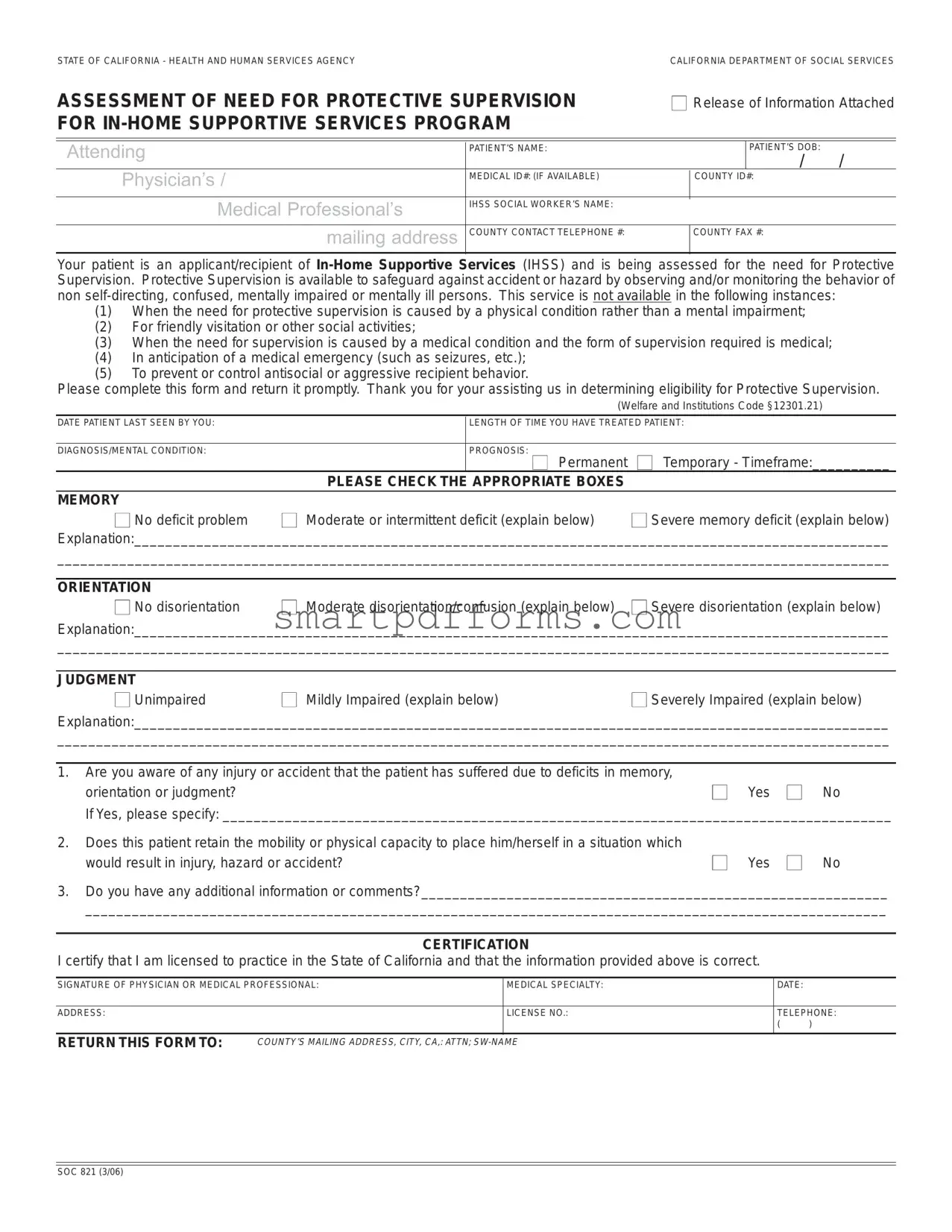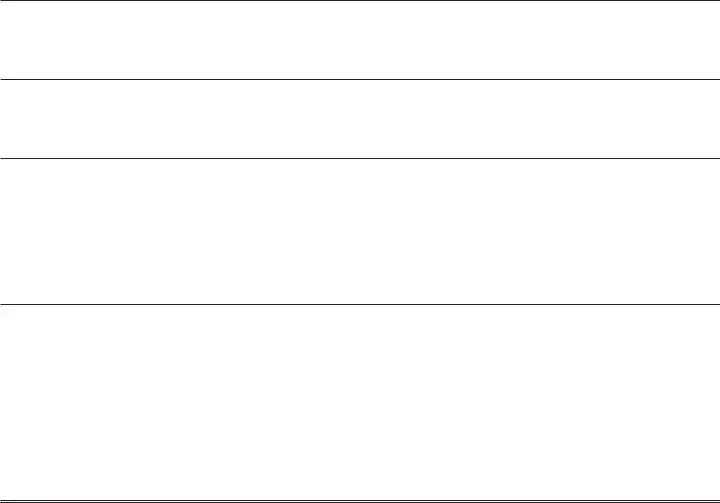STATE OF CALIFORNIA - HEALTH AND HUMAN SERVICES AGENCYCALIFORNIA DEPARTMENT OF SOCIAL SERVICES
ASSESSMENT OF NEED FOR PROTECTIVE SUPERVISION |
■ Release of Information Attached |
FOR IN-HOME SUPPORTIVE SERVICES PROGRAM |
|
|
|
|
|
|
|
|
|
|
|
|
|
|
|
|
|
Attending |
|
|
PATIENT’S NAME: |
|
|
PATIENT’S DOB: |
|
|
|
|
|
|
/ / |
Physician’s / |
|
MEDICAL ID#: (IF AVAILABLE) |
|
COUNTY ID#: |
|
|
|
|
|
|
|
|
|
|
|
Medical Professional’s |
IHSS SOCIAL WORKER’S NAME: |
|
|
|
|
|
|
|
|
|
|
|
|
|
|
|
|
|
|
mailing address |
COUNTY CONTACT TELEPHONE #: |
|
COUNTY FAX #: |
|
|
|
|
|
|
|
|
|
|
|
|
|
|
Your patient is an applicant/recipient of In-Home Supportive Services (IHSS) and is being assessed for the need for Protective Supervision. Protective Supervision is available to safeguard against accident or hazard by observing and/or monitoring the behavior of non self-directing, confused, mentally impaired or mentally ill persons. This service is not available in the following instances:
(1)When the need for protective supervision is caused by a physical condition rather than a mental impairment;
(2)For friendly visitation or other social activities;
(3)When the need for supervision is caused by a medical condition and the form of supervision required is medical;
(4)In anticipation of a medical emergency (such as seizures, etc.);
(5)To prevent or control antisocial or aggressive recipient behavior.
Please complete this form and return it promptly. Thank you for your assisting us in determining eligibility for Protective Supervision.
(Welfare and Institutions Code §12301.21)
DATE PATIENT LAST SEEN BY YOU: |
|
LENGTH OF TIME YOU HAVE TREATED PATIENT: |
|
|
|
|
DIAGNOSIS/MENTAL CONDITION: |
|
PROGNOSIS: ■ Permanent |
■ Temporary - Timeframe:__________ |
|
PLEASE CHECK THE APPROPRIATE BOXES |
|
MEMORY |
|
|
|
■ No deficit problem |
■ Moderate or intermittent deficit (explain below) |
■ Severe memory deficit (explain below) |
Explanation:_________________________________________________________________________________________________
___________________________________________________________________________________________________________
ORIENTATION |
|
■ No disorientation |
■ Moderate disorientation/confusion (explain below) ■ Severe disorientation (explain below) |
Explanation:_________________________________________________________________________________________________
___________________________________________________________________________________________________________
JUDGMENT |
|
|
■ Unimpaired |
■ Mildly Impaired (explain below) |
■ Severely Impaired (explain below) |
Explanation:_________________________________________________________________________________________________
___________________________________________________________________________________________________________
1.Are you aware of any injury or accident that the patient has suffered due to deficits in memory,
orientation or judgment?■ Yes ■ No
If Yes, please specify: ______________________________________________________________________________________
2.Does this patient retain the mobility or physical capacity to place him/herself in a situation which
would result in injury, hazard or accident? |
■ |
Yes ■ |
No |
3.Do you have any additional information or comments?____________________________________________________________
_______________________________________________________________________________________________________
CERTIFICATION
I certify that I am licensed to practice in the State of California and that the information provided above is correct.
SIGNATURE OF PHYSICIAN OR MEDICAL PROFESSIONAL: |
MEDICAL SPECIALTY: |
DATE: |
|
|
|
|
ADDRESS: |
LICENSE NO.: |
TELEPHONE: |
|
|
( |
) |
|
|
|
|

